This thesis aims to understand how the city of Venice will continue to function as sea levels rise due to global warming and how its relationship to tourism will inevitably change as a result. Is it best to preserve Venice, or let it decay into an elegant ruin; a poignant monument to the devastation of climate change? We believe the answer lies in between these extremes. Where Venice acts as a relic and a repository in which are stored all the trinkets and tokens of civilisations whose lands, like Venice have been reclaimed by the sea. Whilst some buildings decay, others are preserved, reinforced against the ocean, curated as a museum of sorts and housing a facsimile of the Mediterranean world, unravaged by climate change.
A BRIEF JOURNEY THROUGH ST. mARK'S SQUARE in the wake of sea level rise
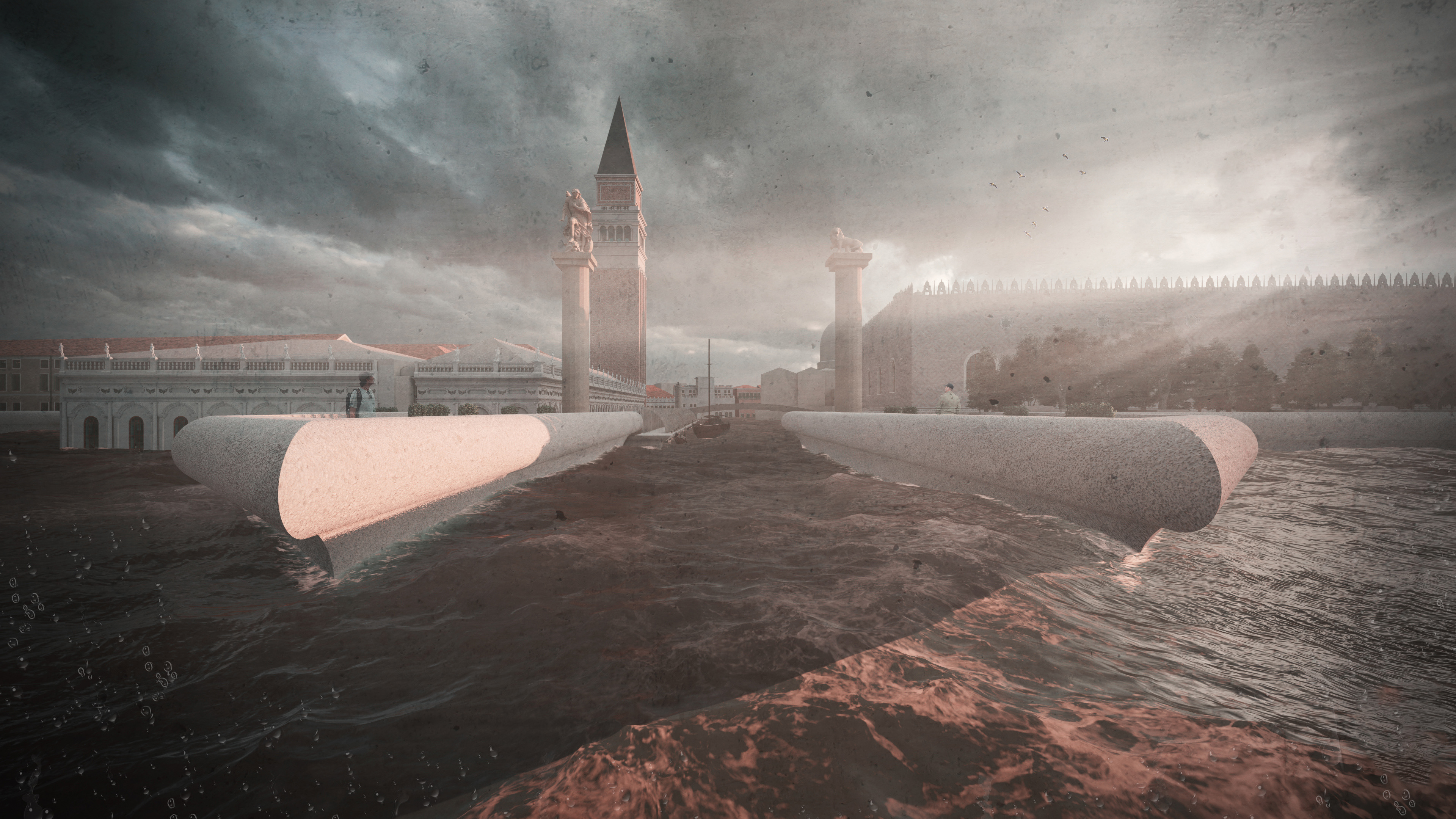
The Pillars of St. Mark act as a gateway
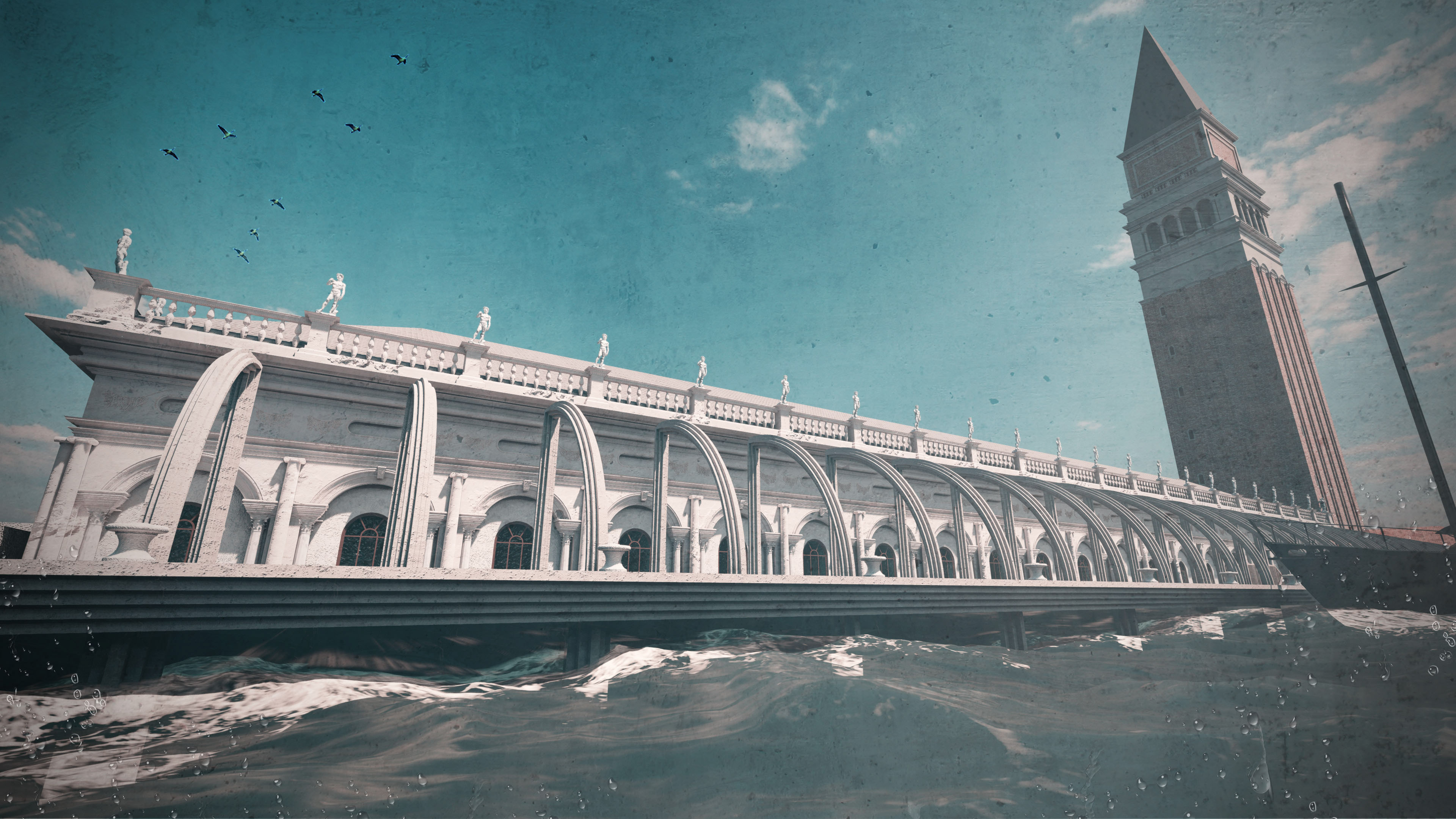
Approaching the port

The library facade as you disembark
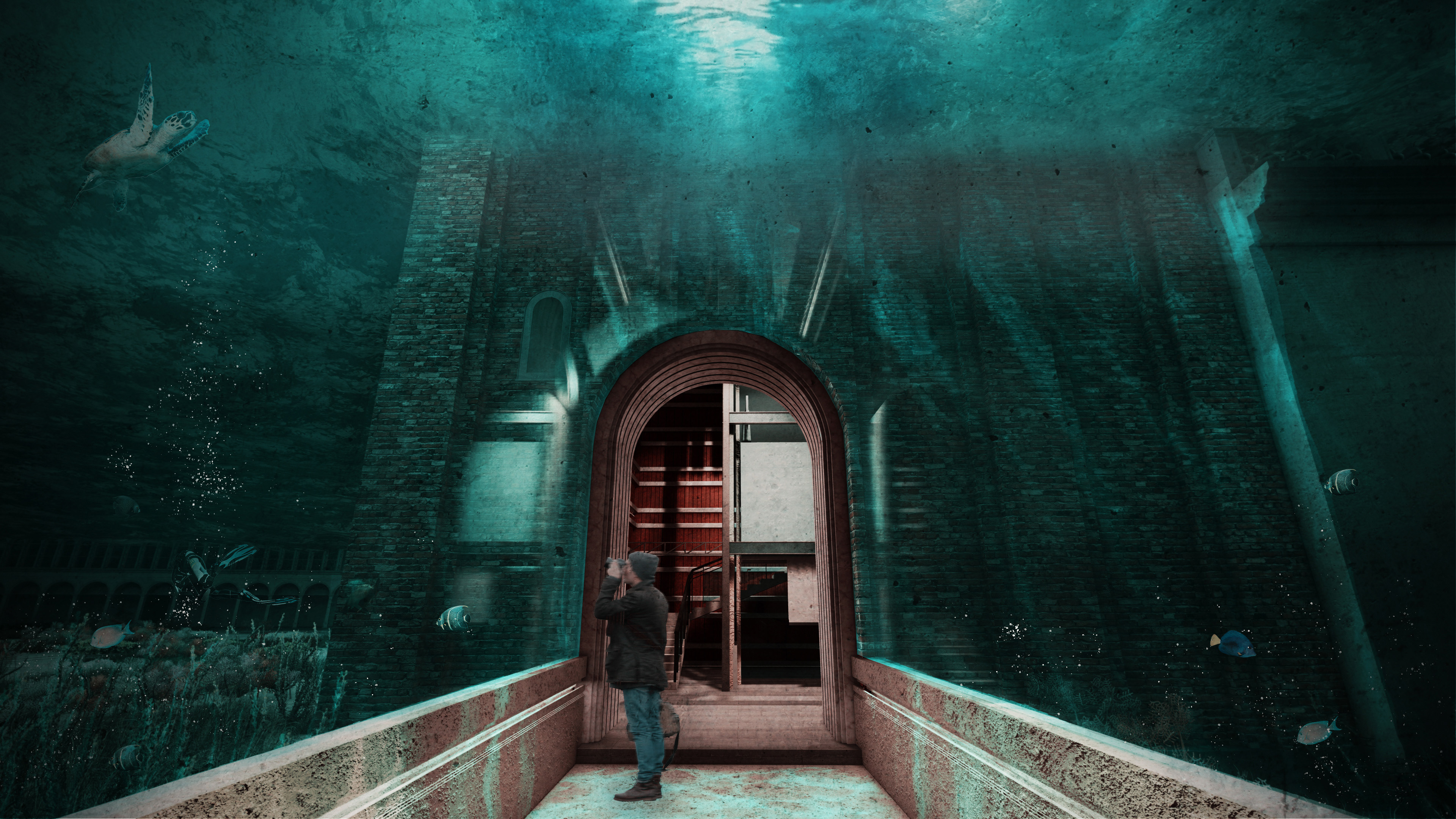
An underwater tunnel to the Campanile San Marco

The Doge's Palace courtyard kept dry by a concrete caisson
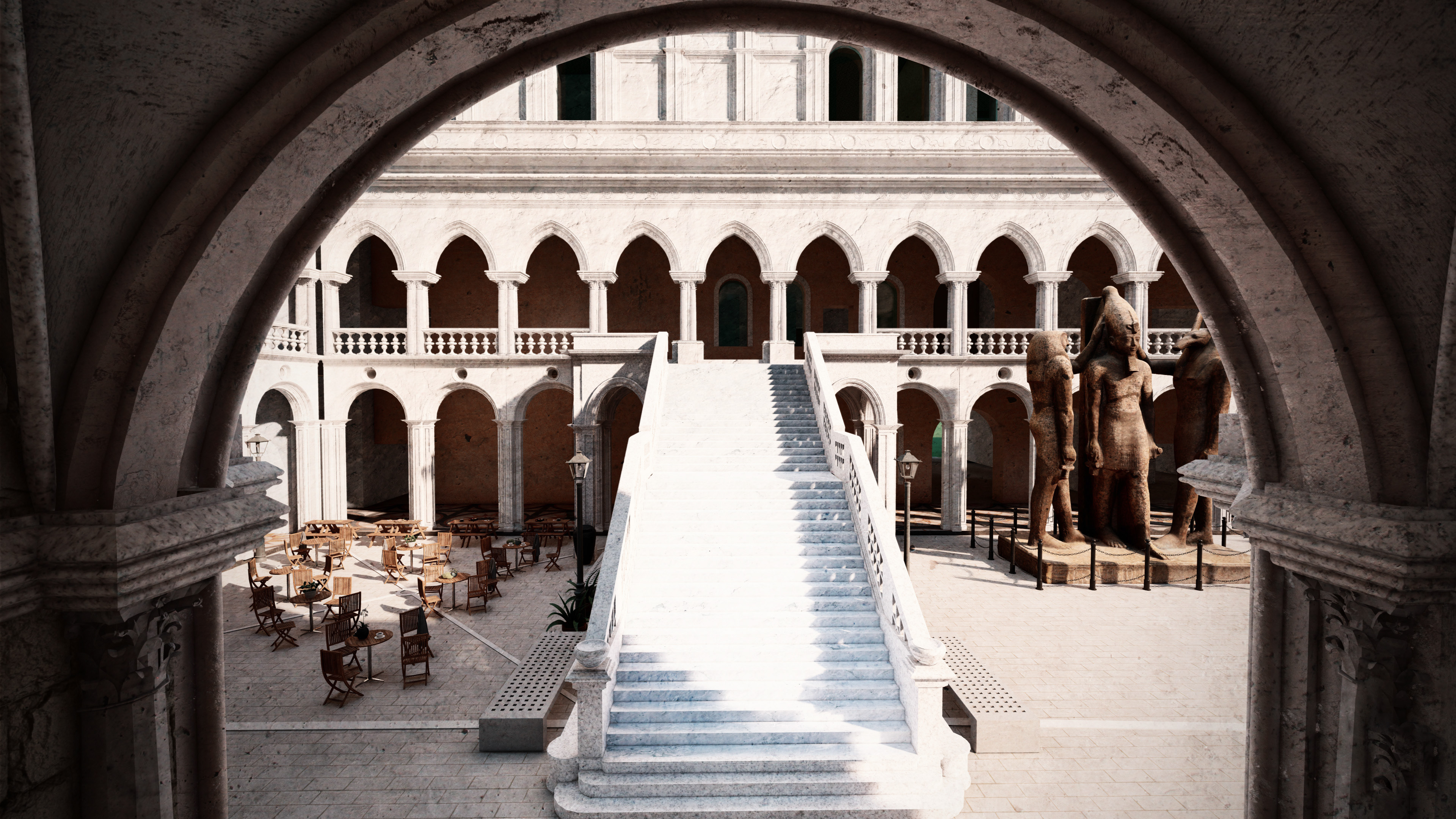
The relics of Egypt next to the Giant's Stair

The sea wall protects the Doge's Palace from wave forces

The giant sphinx of Amenemhat III
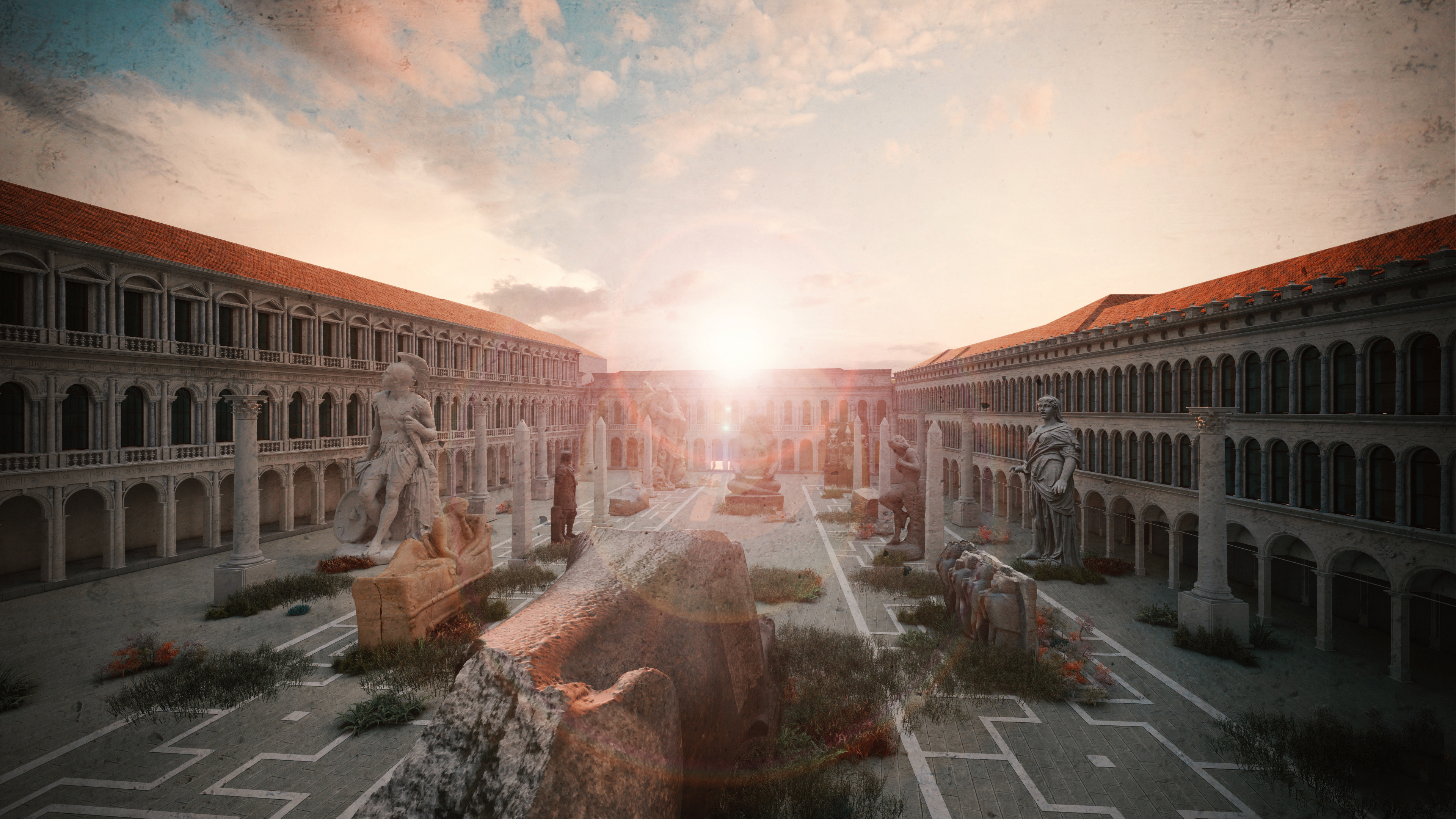
The relics housed in St. Mark's square with the water removed
DRAWINGS
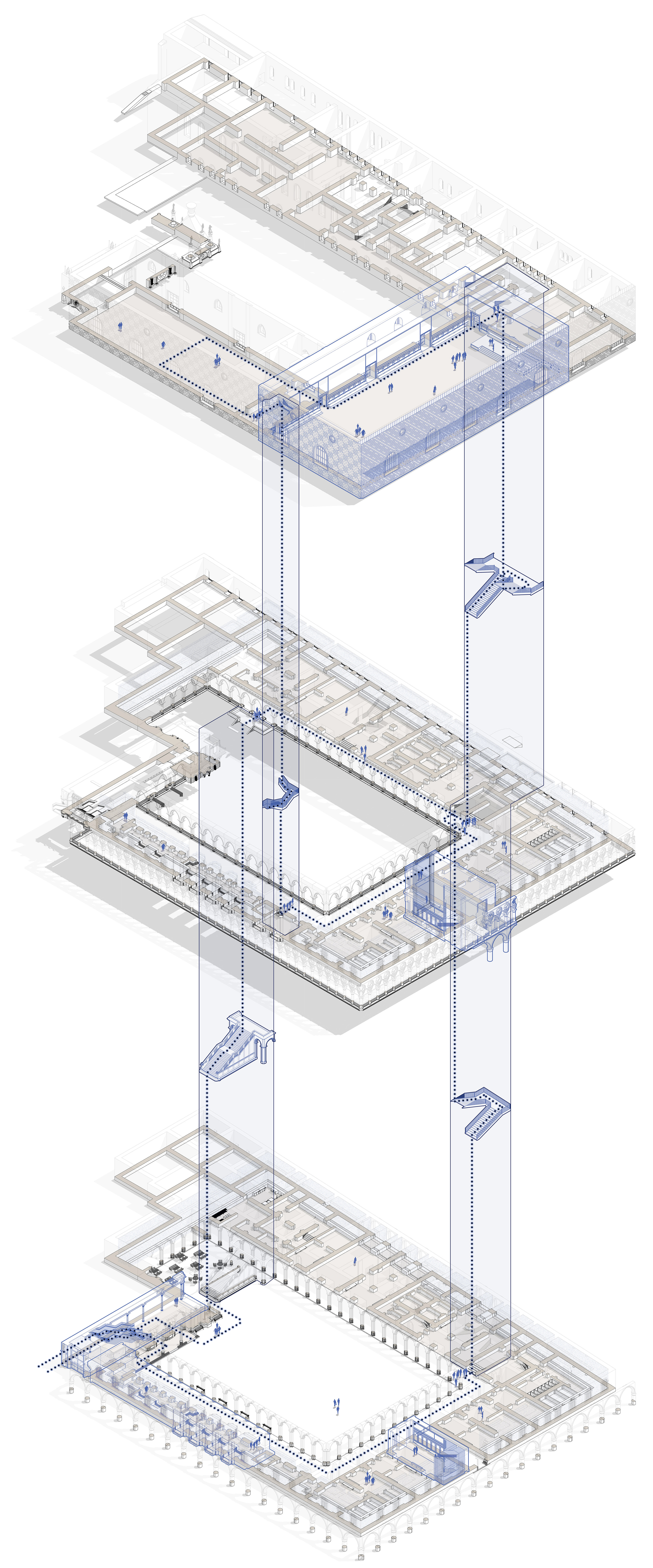
Axo

Doge's Palace Facade
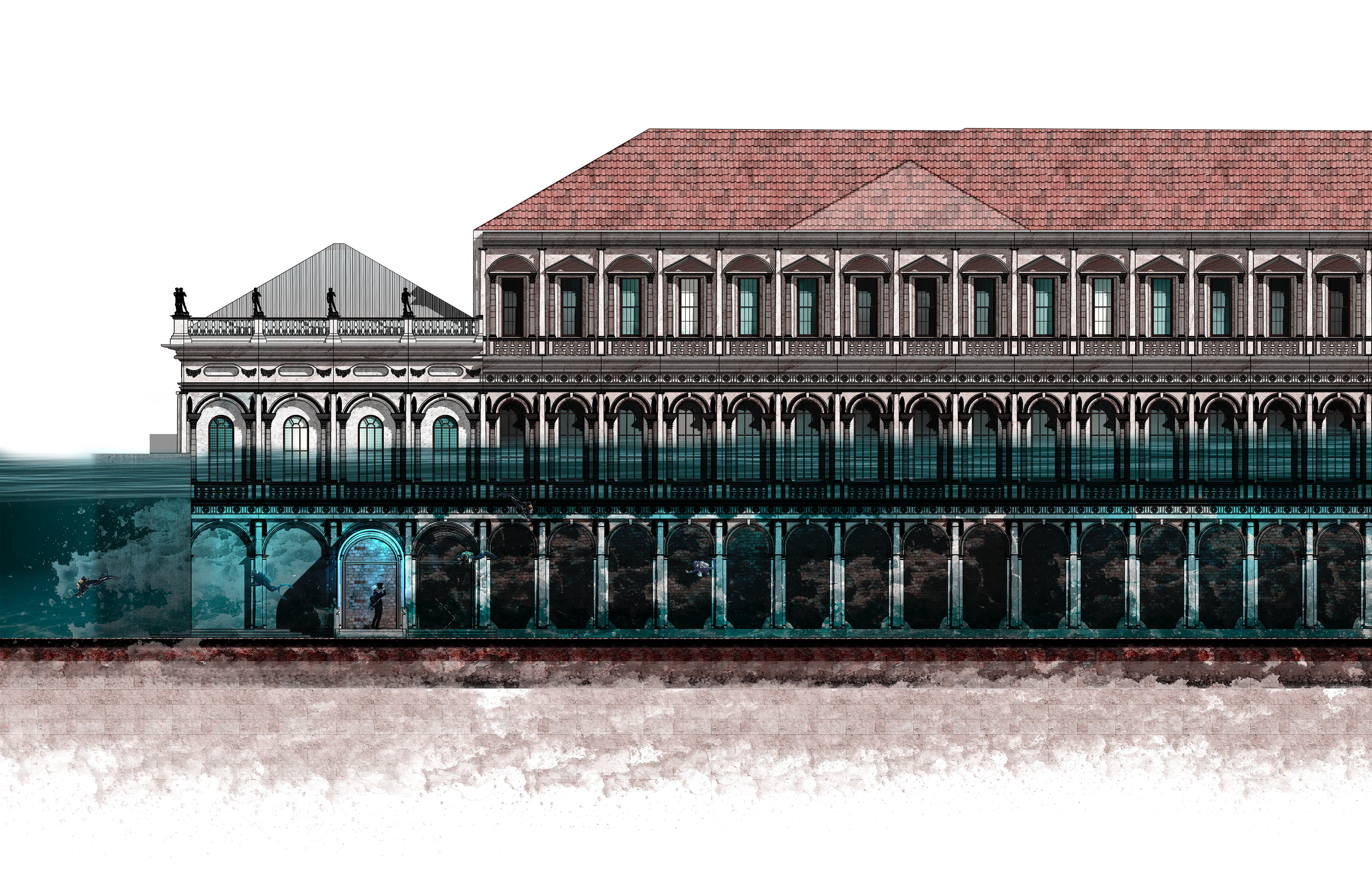
Procuratie Nuove Facade
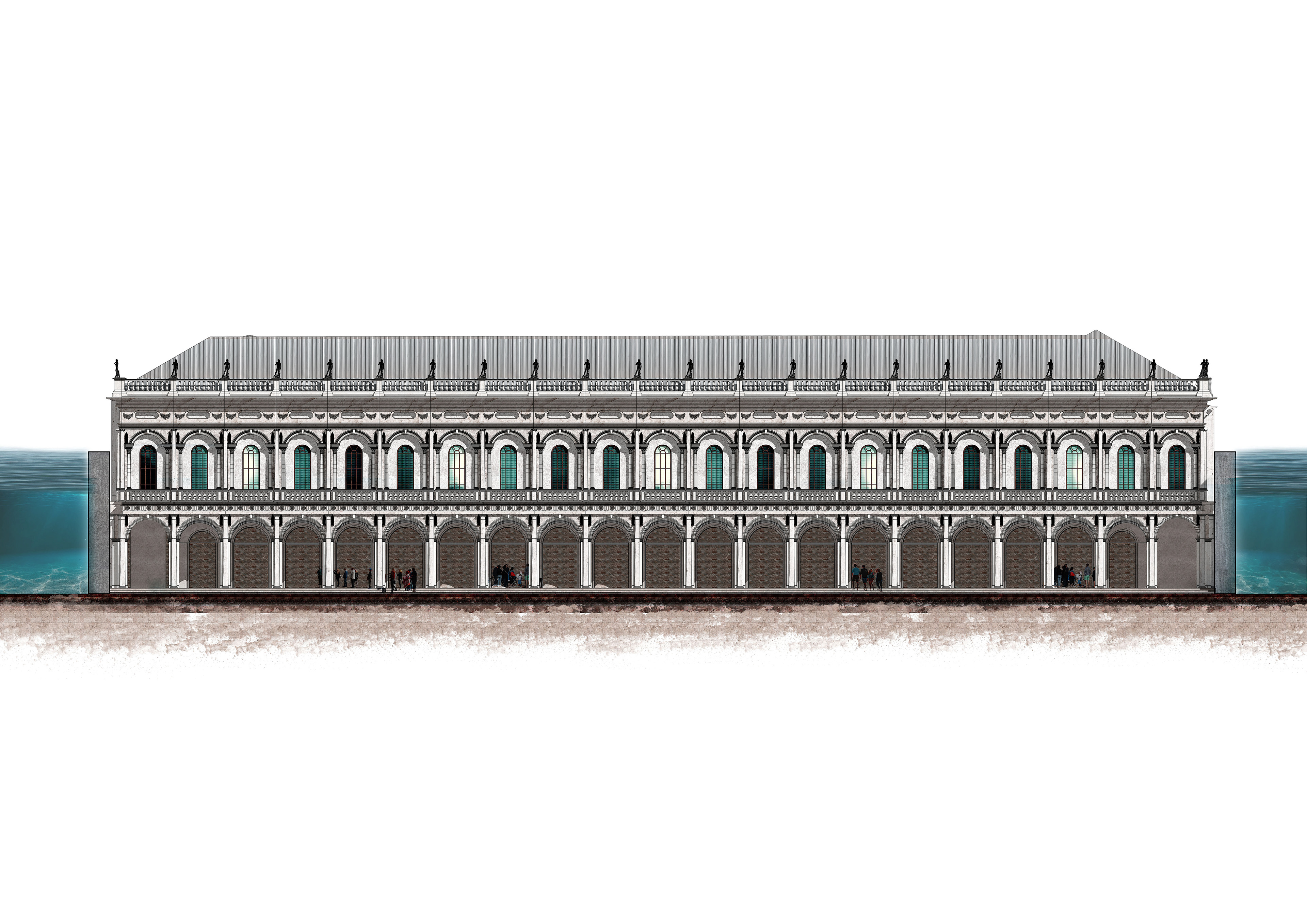
Library Facade
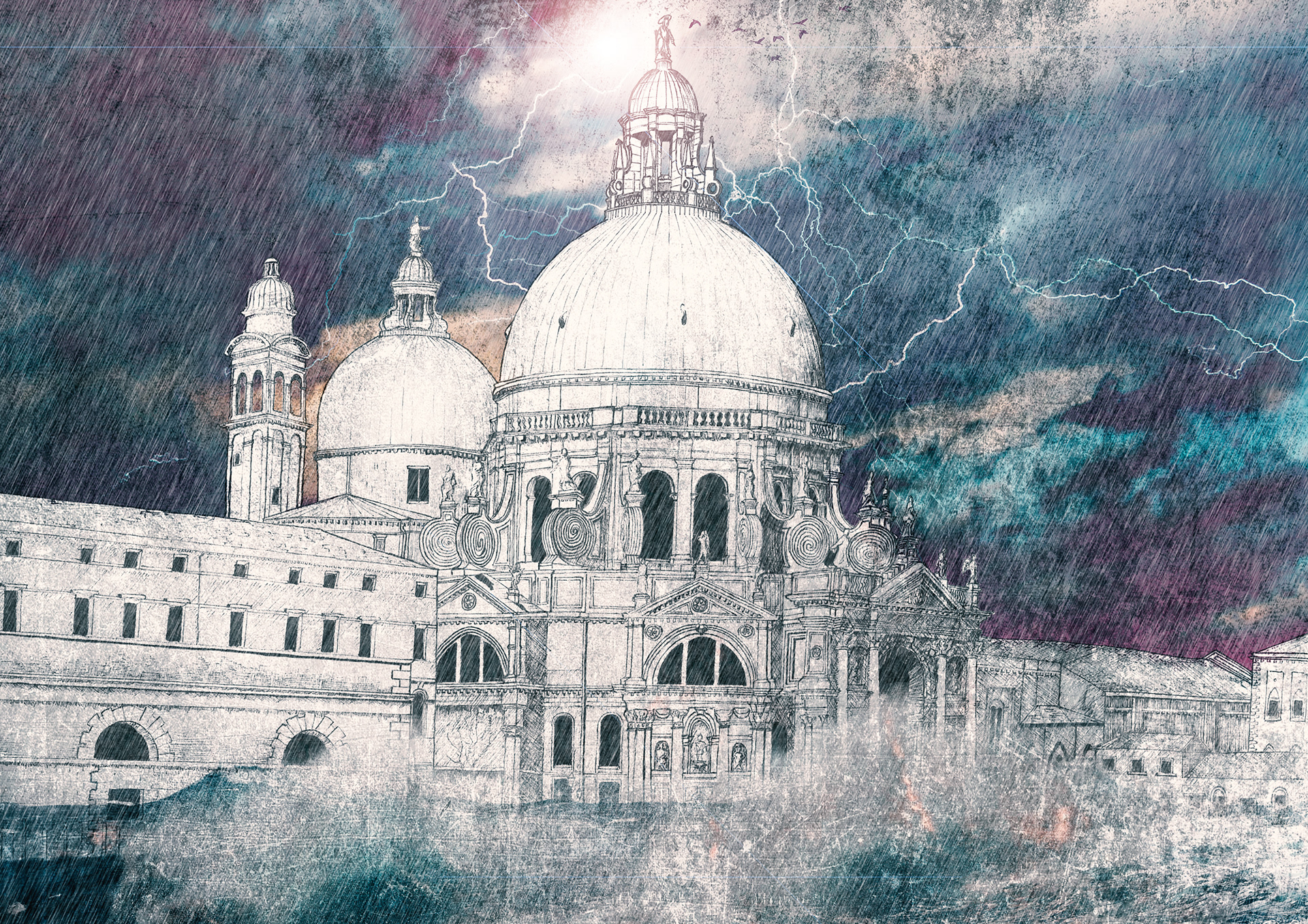

VISUALS
The Library FACADE AS VIEWED FROM THE NEW PORT
THE INTERNAL COURTYARD OF THE DOGE'S PALACE REMAINS DRY DESPITE BEING BENEATH SEA LEVEL DUE TO THE CONCRETE CAISSON PROTECTING IT
ST. MARK'S SQUARE FLOODED, THE COLOSSUS OF SEPTIMIUS SEVERUS STILL VISIBLE ABOVE THE WAVES
ST. MARK's SQUARE with the water removed, revealing the relics submerged beneath the sea